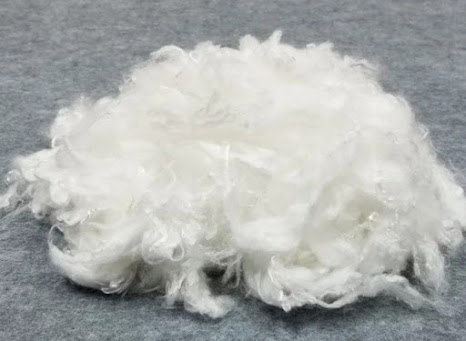Innovations in Viscose Staple Fiber: Enhancing Sustainability and Performance
 |
| Viscose Staple Fiber |
In recent years, there has been a
noticeable change in the textile industry toward eco-friendly and sustainable
materials. Viscose staple fiber is unique among them because of its many uses
and advantages for the environment. Viscose staple fiber, a regenerated
cellulose fiber derived from wood pulp, is a well-liked option in a variety of
industries since it combines natural and synthetic qualities.
The Rise of Viscose Staple Fiber
Viscose staple fiber
is celebrated for its soft, silky feel and high absorbency, which make it ideal
for clothing, home textiles, and hygiene products. Its origin from renewable
wood sources positions it as a more eco-friendly alternative to petroleum-based
fibers. As consumers and manufacturers alike prioritize sustainability, the
demand for viscose staple fiber continues to rise.
Advancements in Production Techniques
Recent technological
advancements have significantly improved the production process of Viscose
Staple Fiber. Traditional methods often involved the use of harsh
chemicals and resulted in significant environmental impacts. However, new
techniques focus on reducing these effects by using more sustainable practices.
For instance, the development of closed-loop production systems has been a
game-changer. These systems recycle water and chemicals used in the
manufacturing process, minimizing waste and reducing the environmental
footprint.
Enhancing Fiber Properties
Innovation in the
modification of viscose staple fiber properties has led to enhanced performance
in various applications. Researchers and manufacturers have been working on
improving the fiber's strength, durability, and moisture-wicking capabilities.
These enhancements make viscose staple fiber more competitive with synthetic
fibers like polyester and nylon, which are traditionally known for their
durability and performance.
Improved Durability and Strength
One of the main
criticisms of viscose staple fiber in the past was its lower durability
compared to synthetic fibers. However, recent advancements have addressed this
issue. By tweaking the chemical composition and refining the production
process, manufacturers have developed viscose fibers with improved tensile
strength. This makes the fiber more suitable for applications requiring high
durability, such as in sportswear and industrial textiles.
Superior Moisture Management
Another area of
significant improvement is moisture management. Viscose staple fiber is
naturally absorbent, but recent innovations have further enhanced its ability
to wick moisture away from the skin. This property is particularly beneficial
in activewear and undergarments, where maintaining dryness is crucial for
comfort and performance. Advanced treatments and finishes applied to the fiber
during production have led to fabrics that not only absorb moisture but also
dry quickly.
Reducing Environmental Impact
In addition to
responsible sourcing, efforts are being made to reduce the overall
environmental impact of viscose staple fiber production. Innovations such as
the use of bio-based solvents and renewable energy in manufacturing processes
are paving the way for greener production methods. These steps are crucial in
reducing the carbon footprint and making viscose staple fiber a truly
sustainable choice.
Applications and Future Prospects
The versatility of
viscose staple fiber ensures its application across a wide range of products.
From fashion and home textiles to medical and hygiene products, its use is
extensive and growing. Looking ahead, the future prospects for viscose staple
fiber are promising. Continued research and development will likely lead to
even more advanced versions of the fiber, further enhancing its sustainability
and performance.
Fashion Industry
In the fashion
industry, viscose staple fiber is increasingly used in eco-friendly clothing
lines. Brands are recognizing the benefits of this fiber in creating soft,
breathable, and biodegradable garments. The trend towards sustainable fashion
is expected to drive further innovation and adoption of viscose staple fiber in
the coming years.
Technical Textiles
Beyond fashion,
viscose staple fiber is making inroads into technical textiles. Its properties
make it suitable for use in filtration systems, automotive textiles, and more.
As technology advances, the potential applications for viscose staple fiber
will expand, opening new opportunities for innovation.
Viscose staple fiber
represents a significant step forward in the quest for sustainable and
high-performance materials. Through innovations in production techniques,
enhancements in fiber properties, and a commitment to sustainability, the
future of viscose staple fiber looks bright. As industries continue to seek
eco-friendly alternatives, viscose staple fiber is poised to play a pivotal
role in shaping a more sustainable future.



Comments
Post a Comment